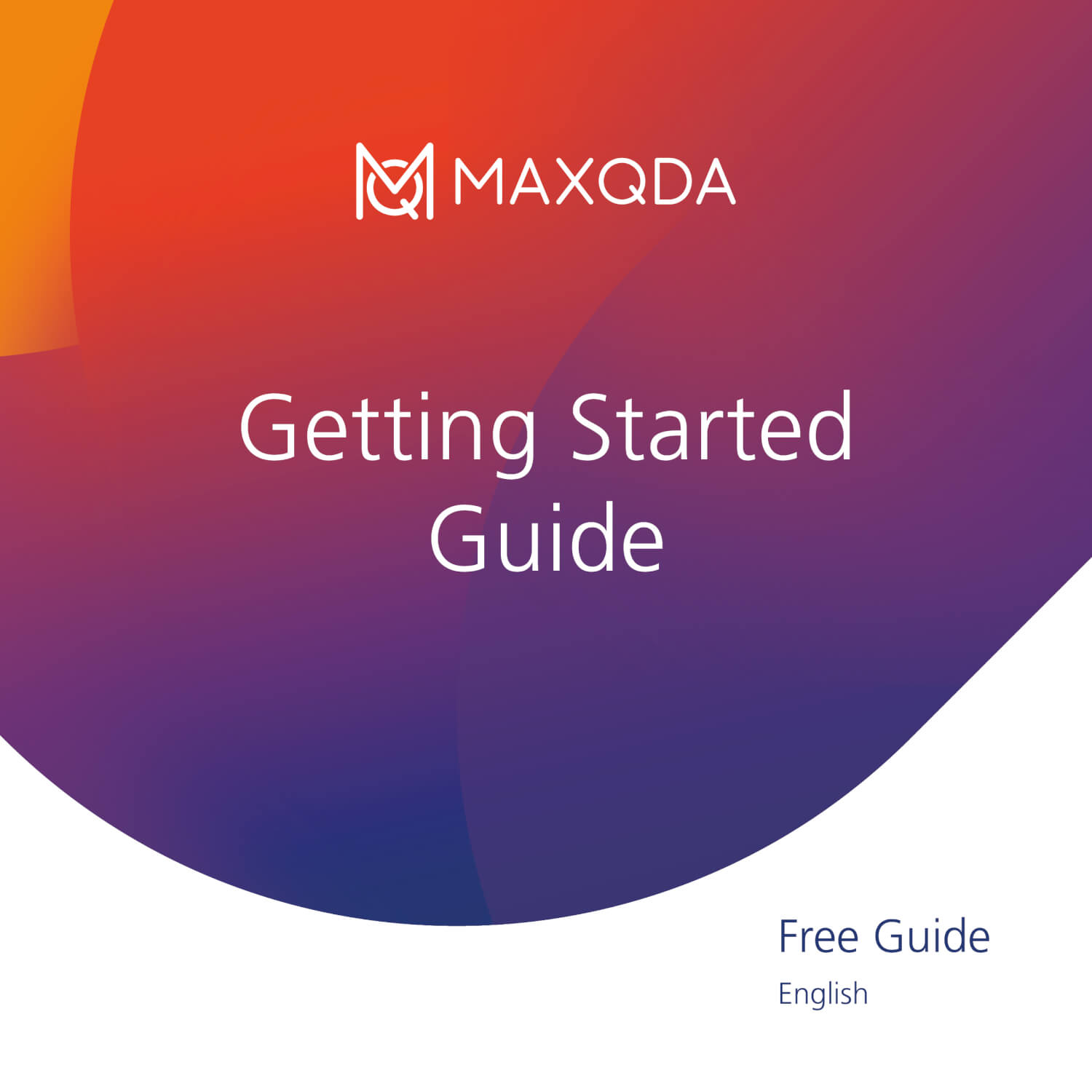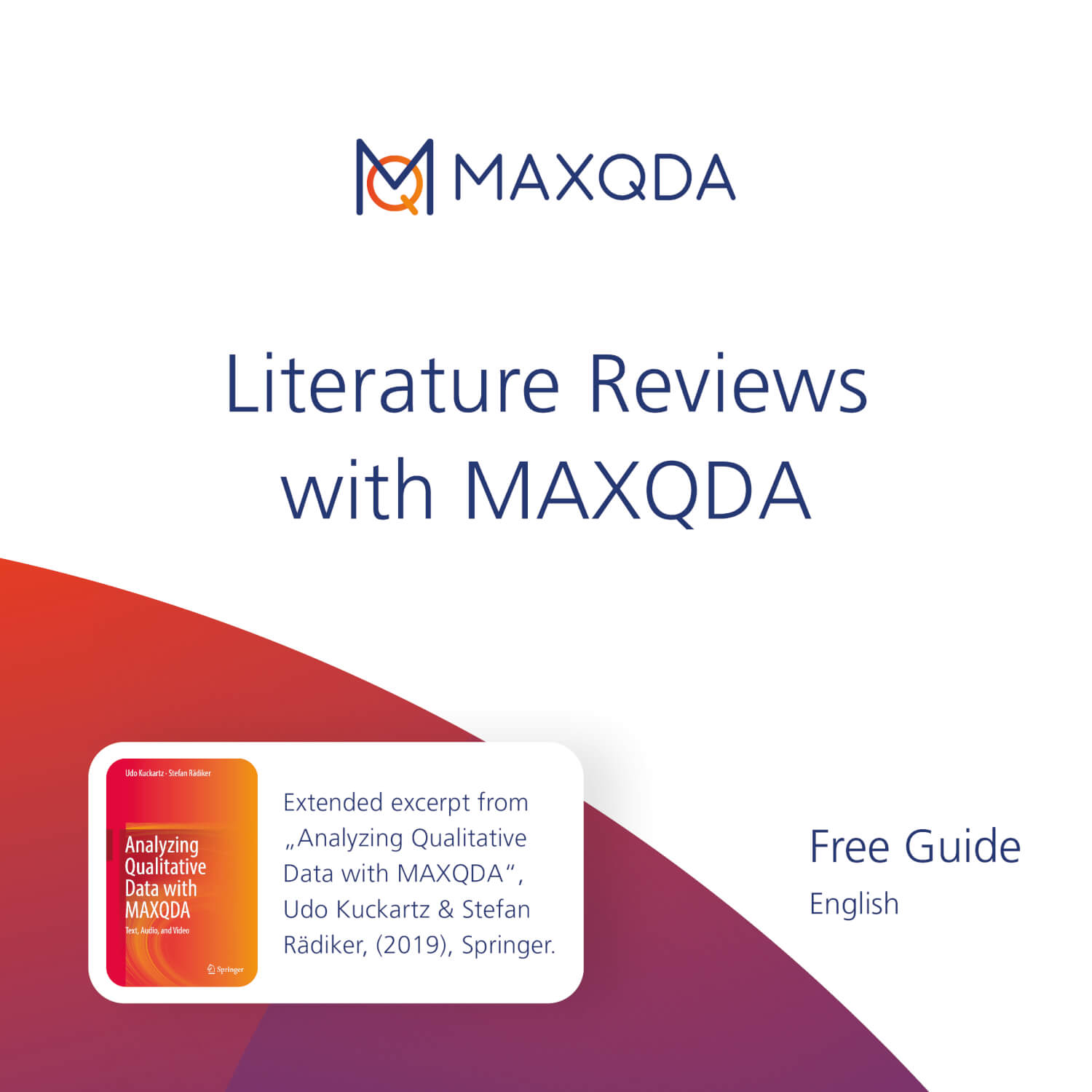Last updated: 17.11.2025
Let AI Assist boost your literature review and analysis
As you may have noticed, there is a rapid growth in AI-based tools for all types of software packages. We followed this trend by releasing AI Assist – your virtual research assistant that simplifies your qualitative data analysis. In the following, we will present you the tools and functions of AI Assist and how they can facilitate your literature reviews.
Literature reviews are an important step in the data analysis journey of many research projects, but often it is a time-consuming and arduous affair. Whether you are reviewing literature for writing a meta-analysis or for the background section of your thesis, work with MAXQDA! Besides the classic tools of MAXQDA that can facilitate each phase of your literature review, the new add-on AI Assist can boost your literature review and analysis in multiple ways.
How to use AI Assist for your literature review
Year by year, the number of publications grows in almost every field of research - our insights and knowledge likewise. The drawback is that the number of publications might be too high to keep track of the recent developments in your field of research. Consequently, conducting a proper literature review becomes more and more difficult, and the importance of quickly identifying whether a publication is interesting for your research question constantly increases.
Luckily, MAXQDA’s AI Assist add-on is here to help. Among others, it can summarize entire documents, individual text segments, and your coded segments, allowing you to quickly decide whether a publication is relevant to your research question. But there is more – you can also have unfamiliar terms and expressions explained to help you understand academic papers more quickly. You can chat with your literature to get answers to content-related questions, and with AI Coding, you can identify and analyze thematic aspects in your data in a targeted way. The following provides a step-by-step guide on how to use MAXQDA for your literature review and analysis, with a special focus on how AI Assist can support you.
Step one of AI for literature reviews: Identify and import your literature
Despite the fact that MAXQDA and AI Assist can facilitate your literature review and analysis in many ways, you should plan your process carefully to work efficiently and with clear focus. Define the the purpose of your literature review and the questions you want to answer. Develop a search strategy which includes, but is not limited to, deciding on literature databases, search terms, and practical and methodological criteria for selecting high-quality scientific literature.
Search the selected literature databases for publications that interest you by assessing the relevance of the title, keywords, and abstract. If you find a publication relevant, download the PDF to import it into MAXQDA. You can then use AI Assist to determine whether the publication falls within the specific scope of your research question. Alternatively, you can use reference management programs such as EndNote, Mendeley, Zotero, or Citavi to collect and import your literature into MAXQDA.
To import data from a reference management program, click on Import > Reference Manager Data in MAXQDA and select the software you are using. During the import process, each publication becomes its own text document. If the full texts are included, MAXQDA automatically links them to their corresponding records using internal links. The key details from each reference (like the title, abstract, or author) are automatically coded so you can easily compile, search, and analyze them later. Any attachments are also auto-coded with their assigned keywords during import, and any notes you've added to a record will be saved as a document memo linked to the corresponding file. If you have already downloaded the PDFs and do not need RIS data, you can also import your files easily via drag and drop from your Windows Explorer or Mac Finder window.

Step two of AI for literature reviews: Determine a paper's relevance with AI Summaries and the AI Chat
After importing publications that might be relevant to your research question, you need to determine which ones truly merit inclusion in your review. AI Assist can dramatically accelerate this process by generating comprehensive document summaries on which you can base your decision about a paper's relevance. With the AI Chat, you can ask questions about the document and thus check the inclusion criteria even more precisely.
AI-powered Document Summary
To create an AI-generated document summary, access the document's context menu and select AI Assist > Document Summary. Choose your desired summary language and length, then provide specialized instructions to focus the summary. For example, you can instruct the AI to focus the summary on theories mentioned in the study or to highlight findings related to a specific research question. You can also provide your inclusion and exclusion criteria as additional instructions and instruct the AI to create a summary of how these criteria are met, which you can then use as a basis for your decision.
The AI-generated summary will be stored in a document memo where you can view and edit it as needed. In case you are not satisfied with the result, you might want to improve the instructions and try again. It's important to note that AI-generated summaries aren't perfect. When in doubt about a publication's relevance, it's advisable to read the entire paper. Instead of summarizing the entire document, you can also summarize text segments, for example, to shorten long abstracts. To do this, highlight the text you want to summarize and choose "AI Assist > Summarize Text Selection" from the context menu.

Chat with your literature
With AI Assist's Chat with This Document feature, finding information and exploring aspects of your publication in detail becomes a breeze. You can access the AI-powered chat via a document's context menu. For example, you could ask the generative AI if the publication fulfills a specific criterion or if (and where) the publication includes a particular piece of information. Using the chat feature, you can resolve doubts about inclusion criteria and answer open questions that you might have regarding the literature's relevance. More ideas on what to ask the AI Chat can be found in our blog article.
Read the blog post "How to use the AI Chat"
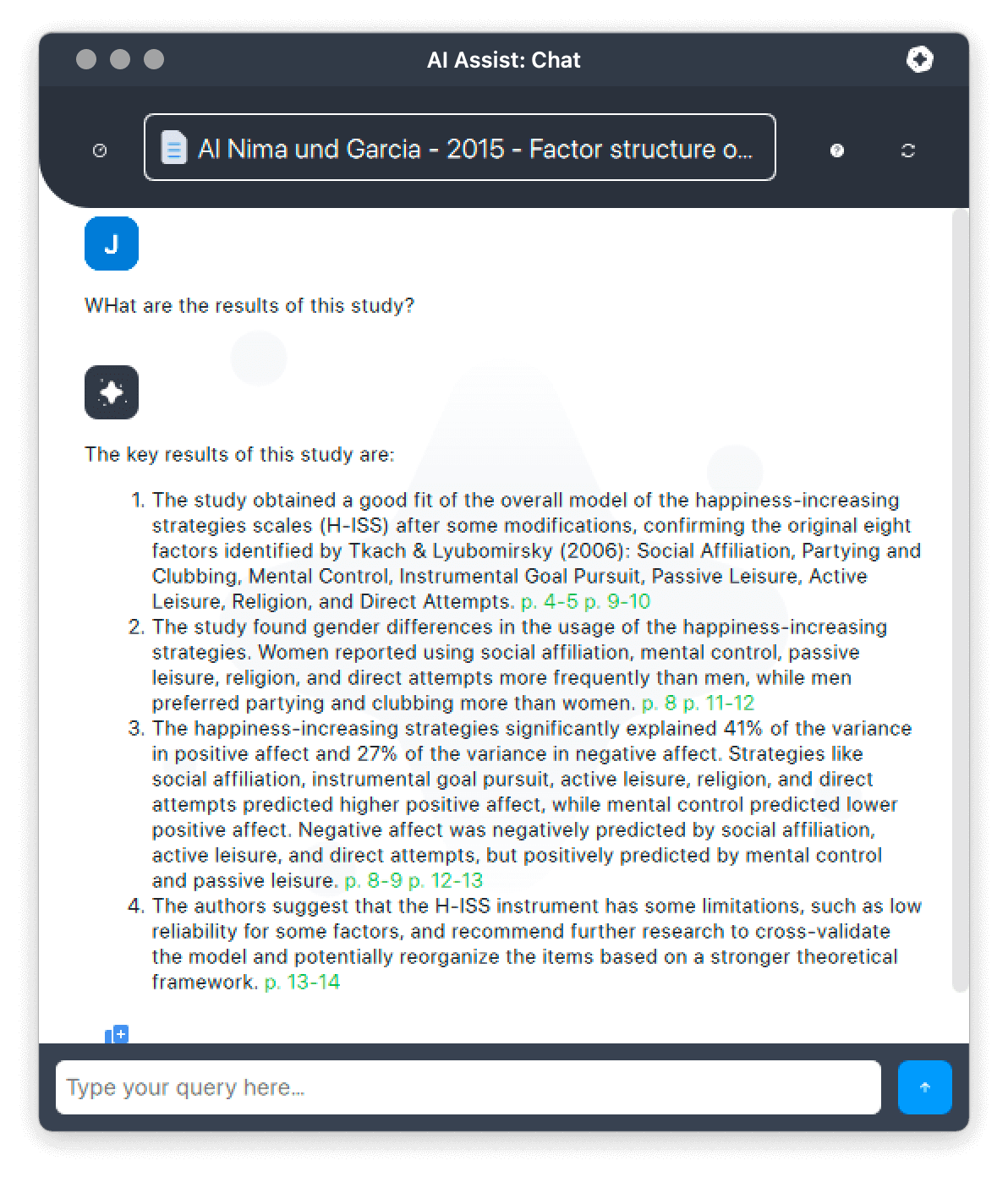
Organize your documents
Especially if you have many publications in your MAXQDA project, you'll likely want to organize your documents in meaningful ways, for example, according to relevance to your research question or by topic. You can easily create a new Document Group by clicking on the corresponding icon in the document system. Documents can be added simply by drag & drop. Alternatively, you can create Document Sets. Documents Sets are particularly helpful if you want to sort your documents according to several criteria (e.g., operationalization and methodology used). You can also use Document Variables to organize your literature. For more information on variables in MAXQDA, please refer to our Online Manual.
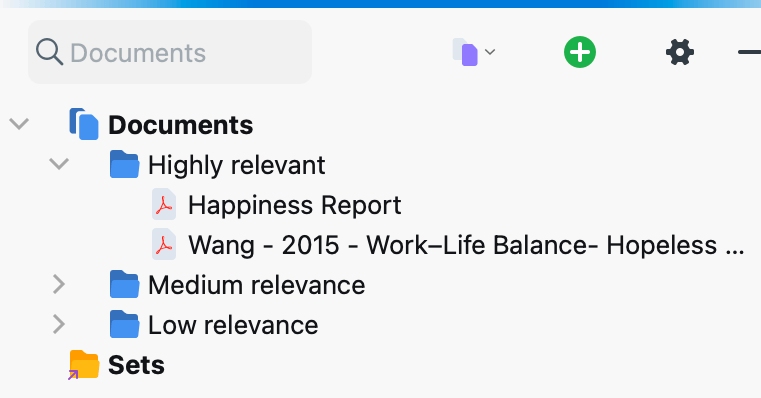
Step three of AI for literature reviews: Comprehend publications with AI Explanations and AI Paraphrases
Although AI can perform various tasks of a literature review, researchers still need a deep understanding of the selected publications. AI-generated Explanations and Paraphrases can assist in developing this deeper comprehension.
AI Assist's Explain Selected Text
If you encounter terms or phrases you do not understand while reading a publication, the AI Assist feature Explain Selected Text can help. Simply highlight the unknown term or phrase and choose AI Assist > Explain Selected Text from the context menu. You'll receive the explanantion in a new window, where you can review and edit it. You can save the explanation as an in-document memo, making it easy to revisit the explanation during your analysis.
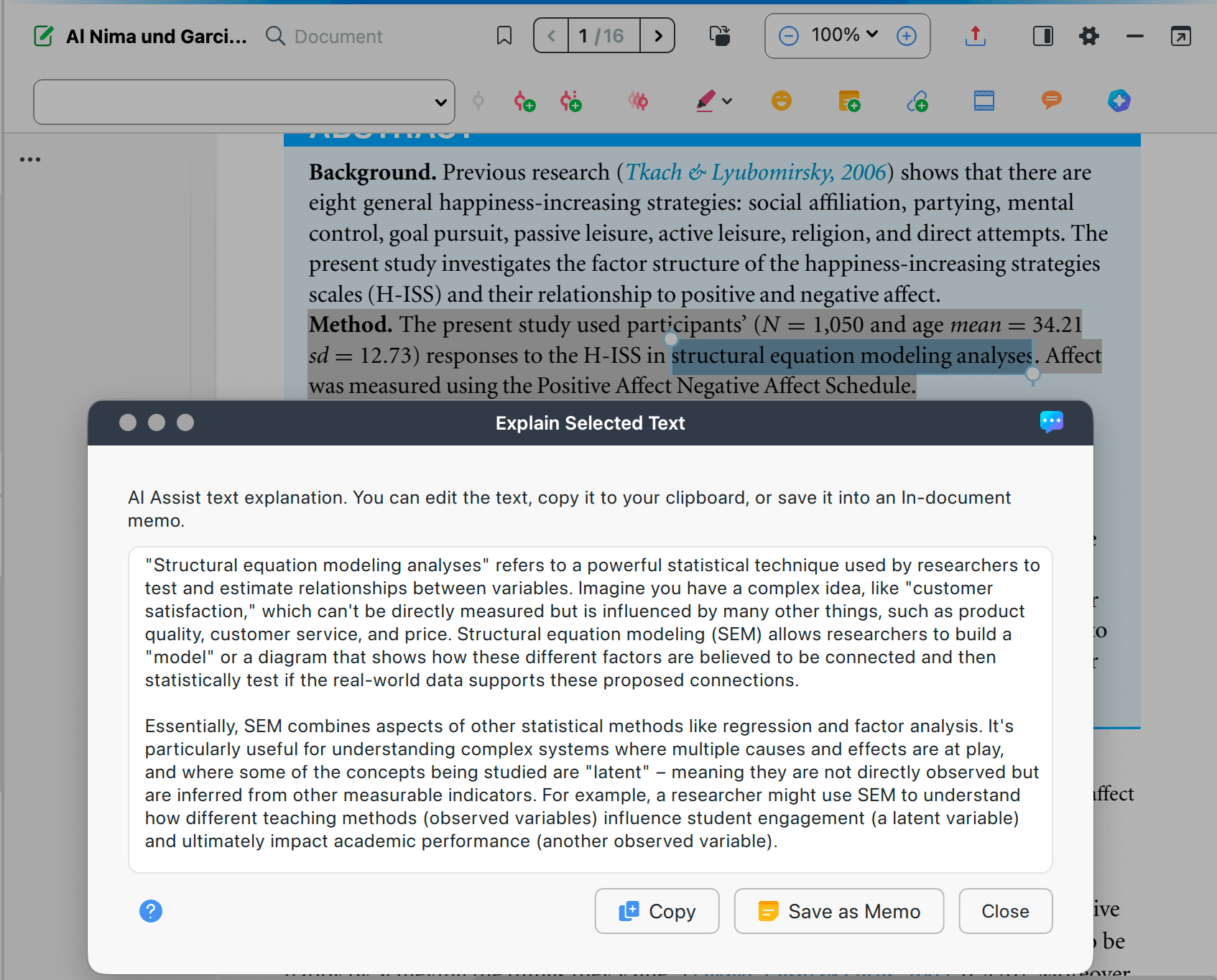
AI Paraphrases
While AI Assist’s document summaries provide an overview of the entire document, paraphrasing enables a more gradual, detailed examination of the text. Many researchers use paraphrases to summarize content in their own words — a method particularly helpful for understanding complex scientific publications and for writing literature reviews. With AI Assist, you can generate AI-powered paraphrases to speed up this process. To create AI-generated paraphrases, highlight the desired text passage and select AI Assist > Paraphrase Selected Text from the context menu.
You can then select the desired output language and length of the paraphrase. The generated paraphrase appears in a text field, where it can be edited as needed. Paraphrases are displayed in the sidebar of the Document Browser. If you do not see them immediately, click on Show sidebar in the Document Browser's toolbar, right-click in the sidebar, and select Paraphrase from the context menu. In addition to enhancing your understanding of the text, paraphrases also facilitate your subsequent work on the literature review. Rather than re-reading the original text, you can quickly skim the paraphrases to refresh your grasp of the content and your insights.
Step four of AI for literature reviews: AI Code your data
A code can be described as a label used to describe phenomena in a text or image. With MAXQDA, you can either code your data manually or use AI Assist to speed up the process and verify your manual codings. Additionally, AI Assist allows you to create more precise subcodes based on already coded segments, which can be especially useful in the later stages of your research process. Additionally, AI Assist can support you with developing more precise subcodes for already coded segments, which can be especially useful in the later stages of your research process.
AI Coding
To use AI Coding, you must first create a code. Go to the Codes window and click the green plus icon. Choose a descriptive name, select a color, and write a code description. For AI coding, the description is crucial as it tells the AI what to look for. A precise code description also helps maintain consistency, especially when working in a team.
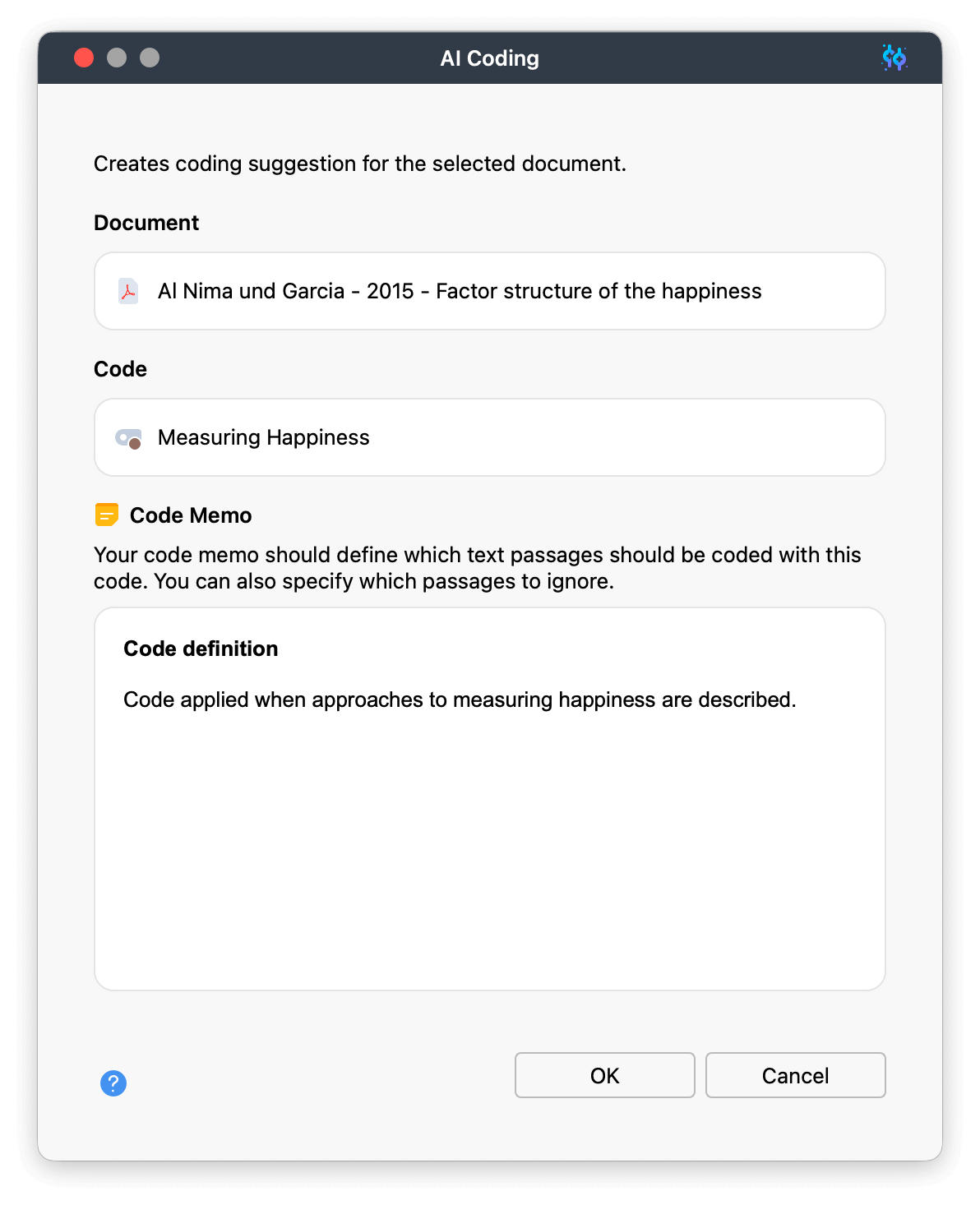
To use AI for coding, select AI Assist > AI Coding from a document's context menu. Drag and drop the relevant code into the dialogue and click okay to let AI Assist analyze the document and find text segments matching your code description. When complete, you'll receive a notification indicating how many segments were coded. If the results aren't satisfactory (too many or too few segments), consider adjusting your code description and repeating the process.
For research transparency, AI-generated codes are clearly distinguishable by their color and naming convention (code names always include the prefix "AI"). Additionally, AI Assist provides an explanation for each coding decision in the form of a coding comment, making it easy to follow the AI's reasoning and decide whether you agree. These comments are visible in the Document Browser's sidebar.

More tips and tricks on how to use AI Assist for the coding process can be found in our blog post.
Read the blog post "AI Coding of Qualitative Data"
AI-generated Subcode Suggestions
Researchers often begin the coding process with broad, more general codes, which are refined in a second step, for example, to capture different dimensions or aspects of a phenomenon more precisely. AI Assist can support you in this process as well. To generate AI-assisted subcode suggestions, open the context menu of a code and select AI Assist > Suggest Subcodes. Choose the desired language. Optionally, you can instruct AI Assist to provide examples for each subcode. The code suggestions will be stored in the code's memo. If you are satisfied with the suggestions, you can create and apply them to your data, either manually or using AI coding, as described in the section AI Coding.
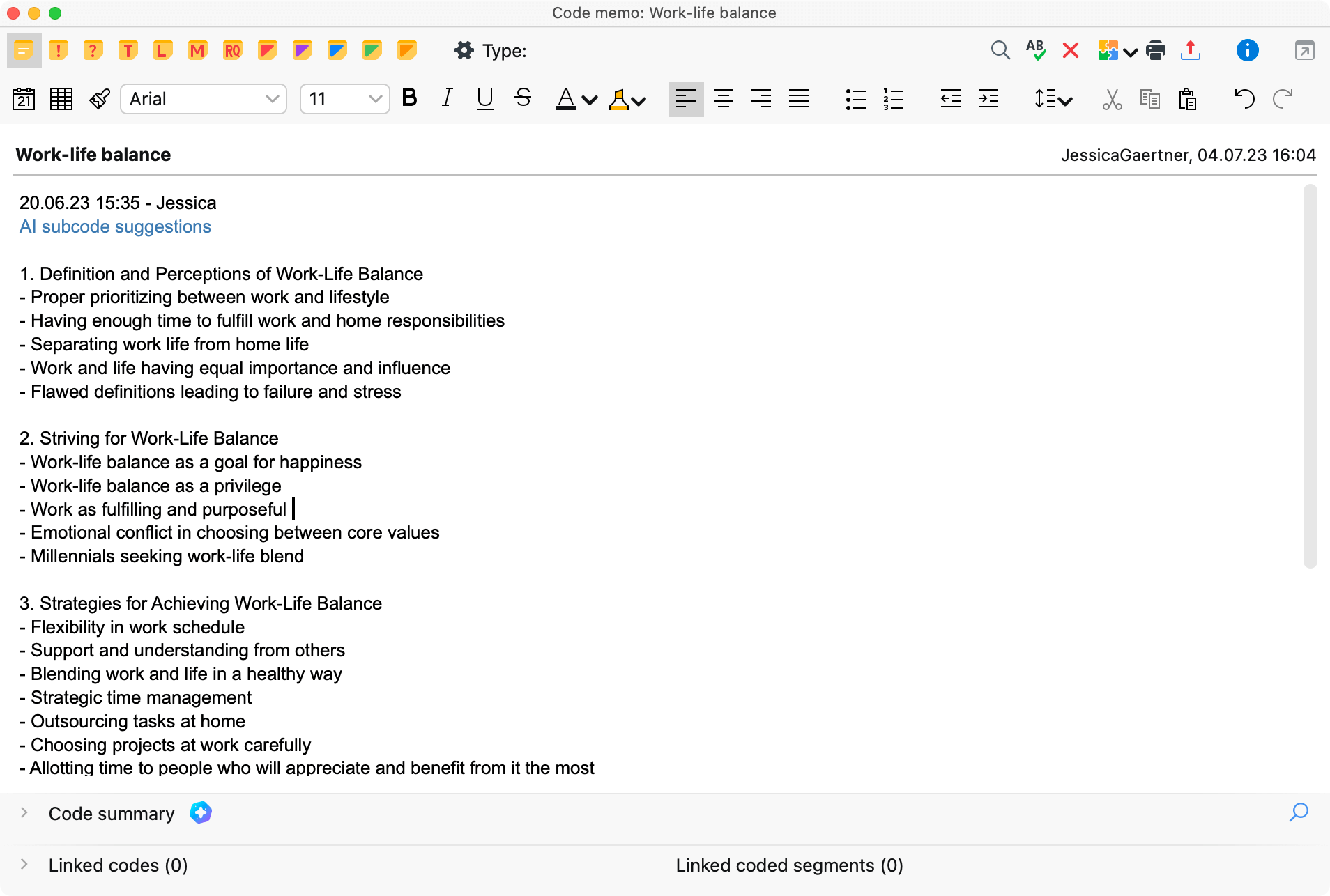
Step five of AI for literature reviews: Analyze & aggregate your results
Once you've coded and/or paraphrased your data, it's time to analyze and then aggregate your results. Besides many other features integrated in MAXQDA for analyzing and synthesizing your data, AI Assist offers a chat feature for analyzing coded segments, enabling you to engage with the data in a focused and detailed manner.
Analyze coded segments with the AI Chat
While the chat for documents provides a case-oriented approach to the data, the chat with coded segments is especially suited for a thematic approach. For example, you can use the AI Chat to identify contradictions in coded text segments or use the coded segments as a basis for creating definitions. You can access the Chat with Coded Segments either through the context menu of a code or from the list of coded segments.
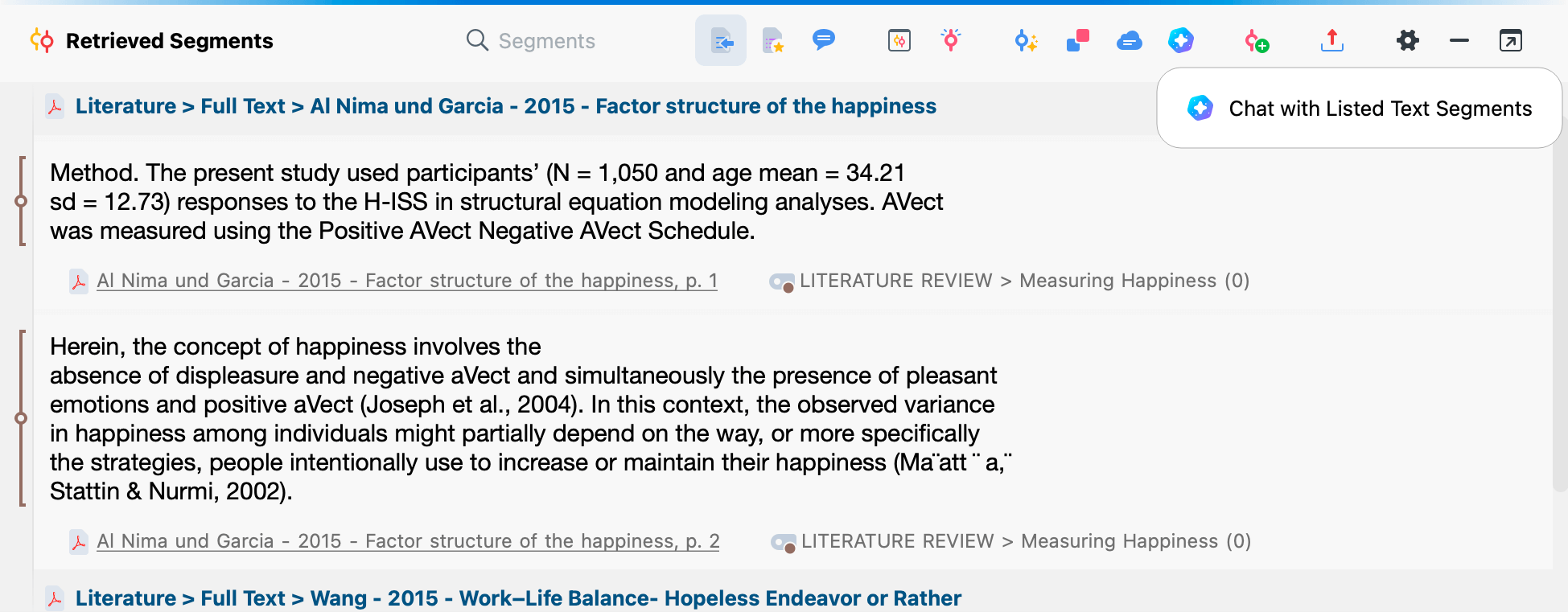
Aggregate findings
Once you have coded and/or paraphrased your data, it’s time to summarize your findings. AI Assist offers several options for this final phase. If you have paraphrased the literature, you can use AI Assist to summarize the paraphrases of a document. For theme-specific summaries, you can summarize the coded segments of a particular code using AI Assist.
Summarize Paraphrases
If you've paraphrased the literature, you can summarize the paraphrases of a document using AI Assist. Navigate to the AI Assist tab, select the option Summarize Paraphrases, and the AI-generated summary will be stored as a Document Memo. This approach is particularly useful when creating summaries at the document level.
Create Theme-Specific Summaries with AI Summary of Coded Segments
For theme-specific summaries, you can summarize the coded segments of a particular code. For example, you might summarize how “happiness” has been operationalized across different studies. This feature can be accessed in the AI Assist tab or via the context menu of a code. The AI-generated summary will be saved as a code memo. If a code appears multiple times in the same document, the Summary Grid is particularly useful for consolidating these occurrences. Open the Summary Grid window, click the AI Assist icon, and follow the instructions to create your summary.

Additional Tools
Besides AI-based features, MAXQDA offers many other features that can facilitate your literature review. You can continue your analysis using MAXQDA’s Overview and Summary Tables to further consolidate your results. You can create visualizations with MAXQDA’s Visual Tools and you can synthesize your findings using the Questions-Themes-Theories tool to write your literature review or report.
Literature about literature reviews and analysis
We offer a variety of free learning materials to help you get started with your literature review. Check out our Getting Started Guide to get a quick overview of MAXQDA and step-by-step instructions on setting up your software and creating your first project with your brand new QDA software. In addition, the free Literature Reviews Guide explains how to conduct a literature review with MAXQDA in more detail.

